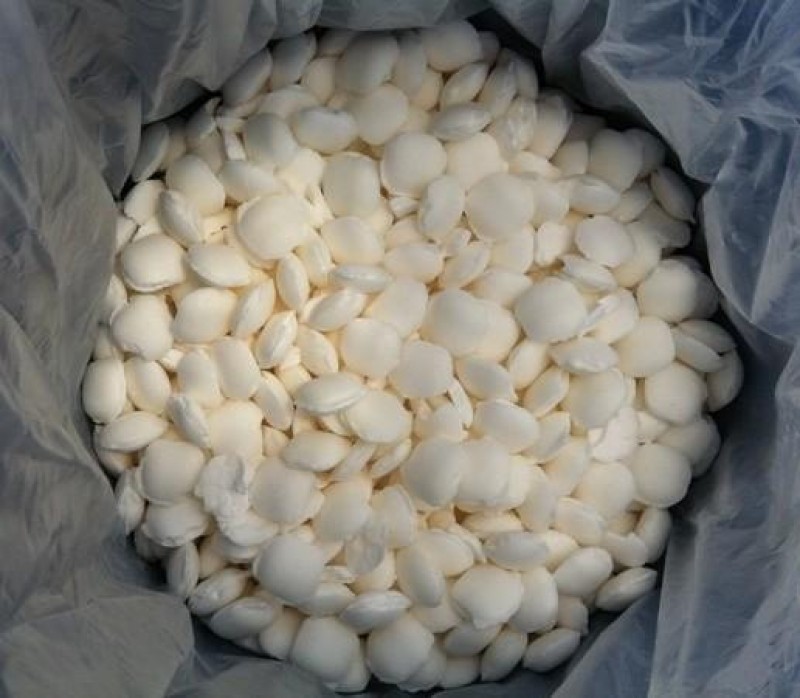Sodium cyanide (NaCN) is a highly toxic and versatile chemical compound that finds various industrial applications. Some of its common uses include:
Gold Mining: Sodium cyanide is primarily used in the mining industry for extracting gold and other precious metals from their ores. In a process known as "cyanidation" or "heap leaching," a dilute solution of sodium cyanide is applied to the ore, allowing it to react with and dissolve the gold. The resulting solution is then processed to recover the gold.
Silver Mining: Sodium cyanide is also used in the extraction of silver from its ores in a similar manner to gold extraction.
Dye and Pigment Production: It is used in the production of certain dyes and pigments, as it helps fix colors to fabrics and other materials.
Electroplating: Sodium cyanide is used as an electrolyte in electroplating processes to coat metal surfaces with a layer of another metal, such as gold or silver, to enhance their appearance and corrosion resistance.
Chemical Intermediates: It serves as a chemical intermediate in the production of various organic compounds, including nitriles, which are used in the synthesis of pharmaceuticals and other chemicals.
Case Hardening: In metallurgy, sodium cyanide is used for case hardening, a process that increases the surface hardness of steel parts, making them more durable.
Fumigation: Sodium cyanide can be used in agriculture and pest control as a fumigant to control rodents and pests in some situations.
Photography: In the past, it was used in photography for various processes, but its use has largely been phased out with the advent of digital photography.
সোডিয়াম সায়ানাইড সোডিয়াম হাইড্রোক্সাইডের সাথে হাইড্রোজেন সায়ানাইডের চিকিত্সার মাধ্যমে উত্পাদিত হয়:[3]
HCN + NaOH → NaCN + H2O
2006 সালে বিশ্বব্যাপী উত্পাদন অনুমান করা হয়েছিল 500,000 টন। পূর্বে এটি উচ্চ তাপমাত্রায় কার্বনের সাথে সোডিয়াম অ্যামাইডের প্রতিক্রিয়া জড়িত কাস্টনার প্রক্রিয়া দ্বারা প্রস্তুত করা হয়েছিল।
NaNH2 + C → NaCN + H2
কঠিন NaCN এর গঠন সোডিয়াম ক্লোরাইডের সাথে সম্পর্কিত। অ্যানিয়ন এবং ক্যাটেশন প্রতিটি ছয়-সমন্বয়। পটাসিয়াম সায়ানাইড (KCN) অনুরূপ গঠন গ্রহণ করে। [৫]
যেহেতু লবণ একটি দুর্বল অ্যাসিড থেকে প্রাপ্ত হয়, সোডিয়াম সায়ানাইড সহজেই হাইড্রোলাইসিস দ্বারা HCN-এ ফিরে আসে; আর্দ্র কঠিন পদার্থ অল্প পরিমাণে হাইড্রোজেন সায়ানাইড নির্গত করে, যার গন্ধ তেতো বাদামের মতো বলে মনে করা হয় (সবাই এর গন্ধ নিতে পারে না-এর ক্ষমতা একটি জেনেটিক বৈশিষ্ট্যের কারণে হয়[6])। সোডিয়াম সায়ানাইড হাইড্রোজেন সায়ানাইড মুক্ত করতে শক্তিশালী অ্যাসিডের সাথে দ্রুত বিক্রিয়া করে। এই বিপজ্জনক প্রক্রিয়াটি সায়ানাইড লবণের সাথে যুক্ত একটি উল্লেখযোগ্য ঝুঁকির প্রতিনিধিত্ব করে। সোডিয়াম সায়ানেট (NaOCN) এবং জল উত্পাদন করতে হাইড্রোজেন পারক্সাইড (H2O2) দিয়ে এটি সবচেয়ে দক্ষতার সাথে ডিটক্সিফাইড হয়:[3]
NaCN + H2O2 → NaOCN + H2O
Sodium cyanide (NaCN) is a chemical compound with unique features and applications. Its exceptional solubility in water and its affinity for precious metals make it a critical reagent in gold and silver mining, enabling the extraction of these valuable resources from ores. Sodium cyanide is an essential component in the cyanidation process, which involves dissolving gold and silver from crushed ore and then recovering them. In addition to its role in mining, it is used in electroplating, providing a thin, protective layer of precious metals on various objects. This compound's versatile chemistry and reactivity in organic synthesis also find applications in the production of pharmaceuticals, dyes, and nitriles. However, its extreme toxicity demands rigorous safety measures in handling and storage to prevent harm to human health and the environment.

Login To Comment